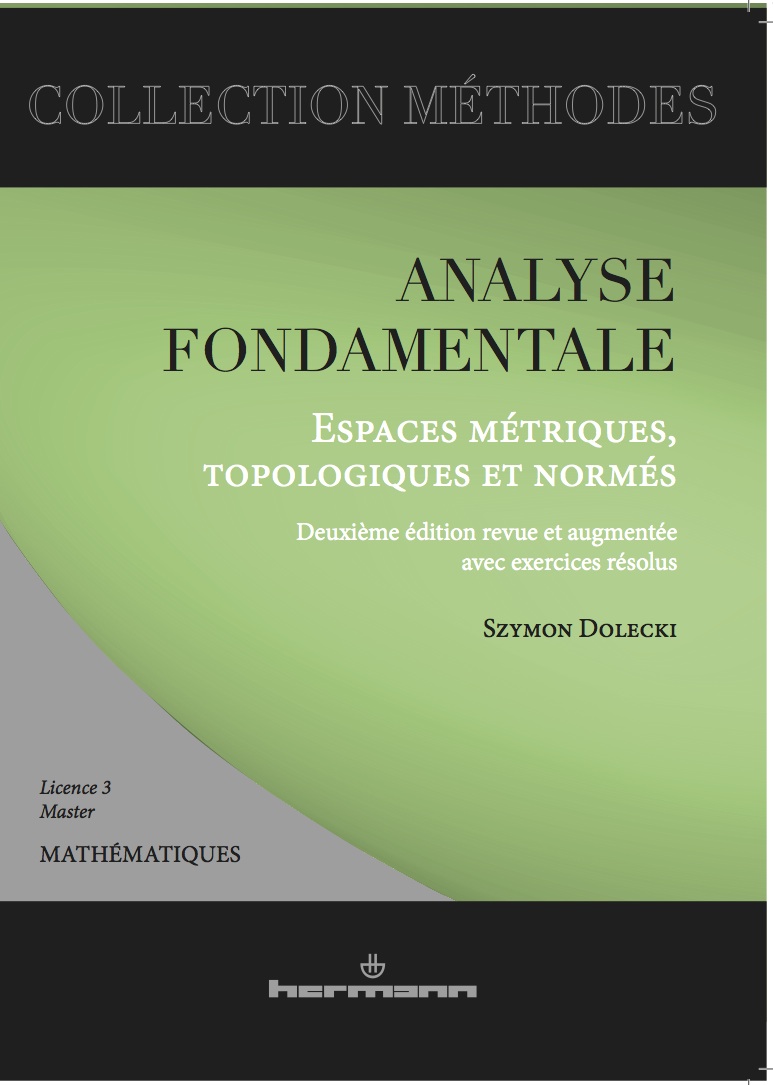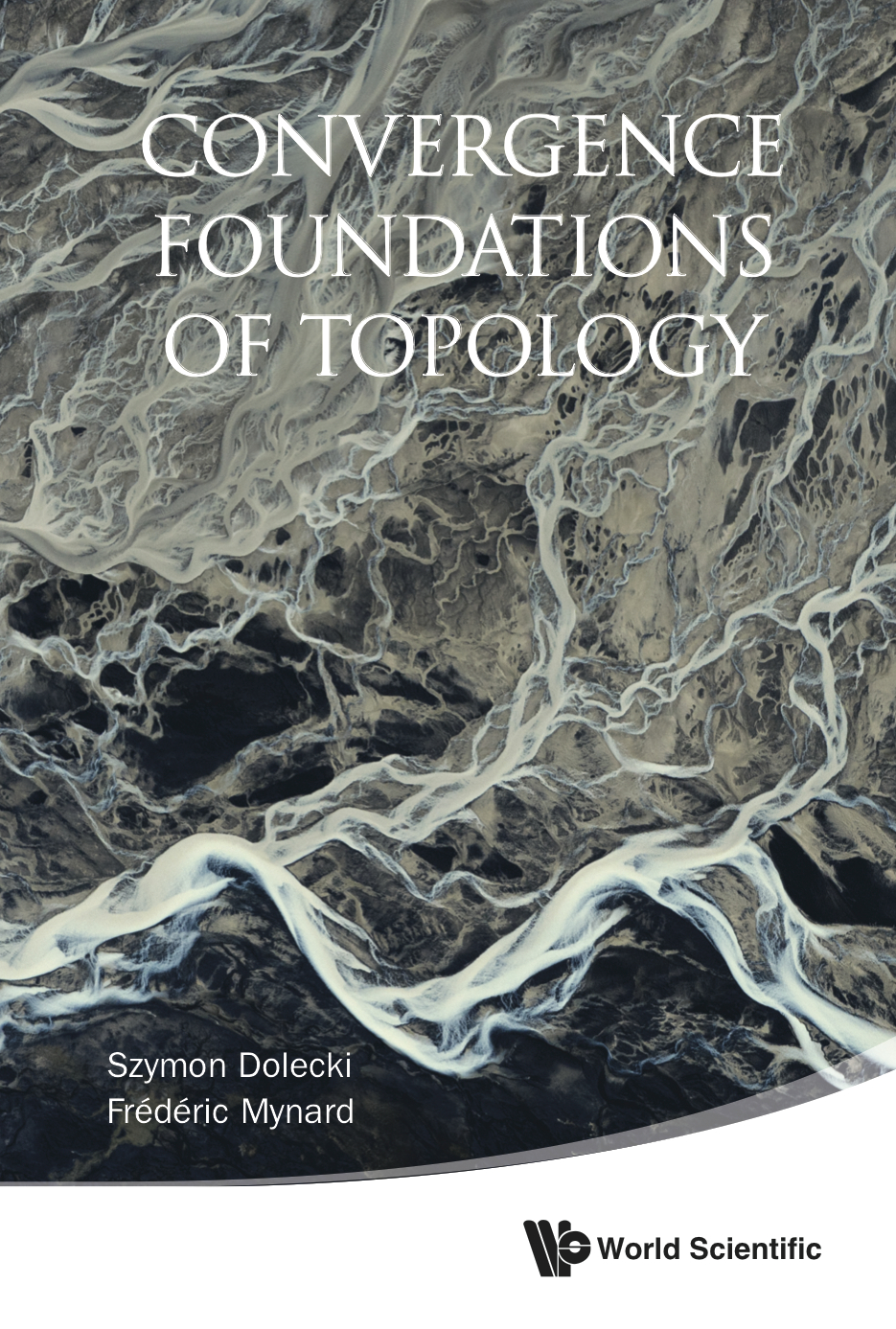| Institut
de
Mathématiques de Bourgogne CNRS UMR 5584, Université de Bourgogne B. P. 47870, 21078 Dijon |
Mathematical Institute of
Burgundy
Burgundy University
B. P. 47870, 21078 Dijon France |
|
Editions Hermann Table des matières Premier chapitre Errata (premier tirage jusqu'à la fin d'octobre 2013 Errata (réimpression novembre 2013) Errata (réimpression juin 2015) Un extrait d'une revue du Mathematical Reviews [This
book] introduces the reader to the topological foundations
of functional analysis in a concise, clear,
well-structured manner.
Chapters usually begin with interesting historical comments; these should stimulate the reader’s curiosity. All the chapters and all the appendices are followed by well-chosen exercises (altogether there are over two hundred of them). The last hundred pages or so of the book present their solution; this feature makes the book ideal for self-study. The many examples are put at the appropriate place; they usually substantiate a statement just made and make clear the limits of a theorem. In his student days, this reviewer would have been glad to have learnt the subject from this book. Carlo E. Sempi Traduction en français
Ce livre introduit le lecteur aux
fondations topologiques de l'analyse fonctionnelle d'une
manière concise, claire et bien structurée.
En règle générale, les chapitres commencent par d'intéressants commentaires historiques, ce qui devrait stimuler la curiosité du lecteur. Tous les chapitres et annexes sont accompagnés d'exercices, bien choisis (au total plus de deux cents). La dernière centaine de pages présente leurs solutions, ce qui rend le livre idéal pour l'auto-apprentissage. De nombreux exemples sont placés de façon judicieuse ; ils justifient les propositions qui les précèdent et précisent leur portée. Quand il était étudiant, ce rapporteur aurait été content d'apprendre le sujet avec ce livre. Carlo E. Sempi |
World Scientific Publishing The
textbook is an alternative to a classical introductory
book in point-set topology. The approach however is
radically different from the classical one. It is based on
convergence rather than on open and closed sets.
Convergence of filters is a natural generalization of the basic and well-known concept of convergence of sequences, so that convergence theory is more natural and intuitive to many, perhaps most, students than classical topology. On the other hand, the framework of convergence is easier, more powerful and far-reaching which highlights a need for a theory of convergence in various branches of analysis.
Convergence theory for filters is
gradually introduced and systematically developed.
Topological spaces are presented as a special subclass of
convergence spaces of particular interest, but a large
part of the material usually developed in a topology
textbook is treated in the larger realm of convergence
spaces.
Contents
A fragment from a review
"It
is clear that the book, with its high level of
scholarship, is a labour of love on the part of its
authors, and it will no doubt make quite a dent in
the right circles … The mature reader, disposed to
this way of redoing topology, will have a great
time."
Mathematical Association of America |

